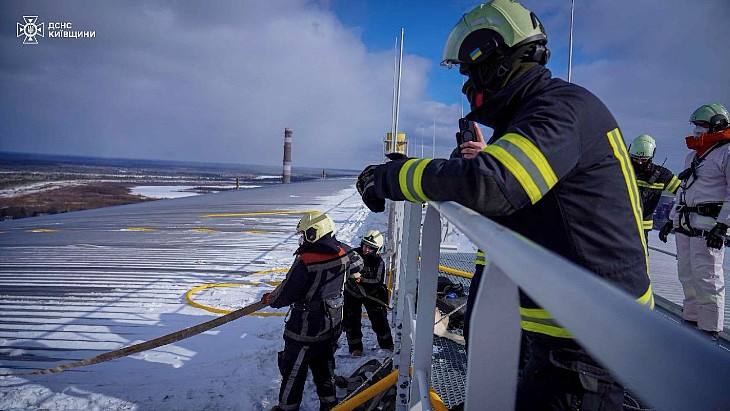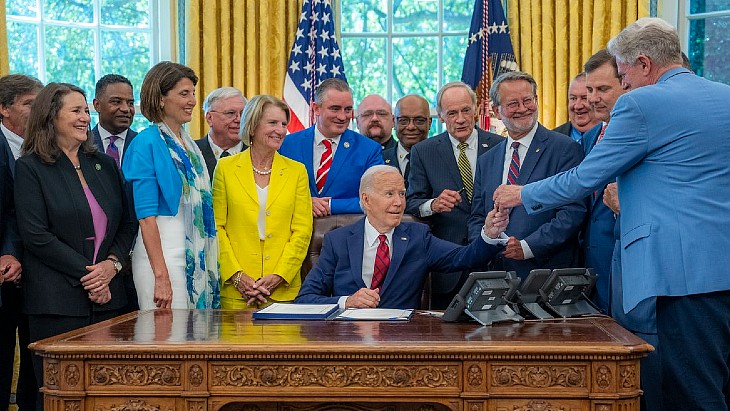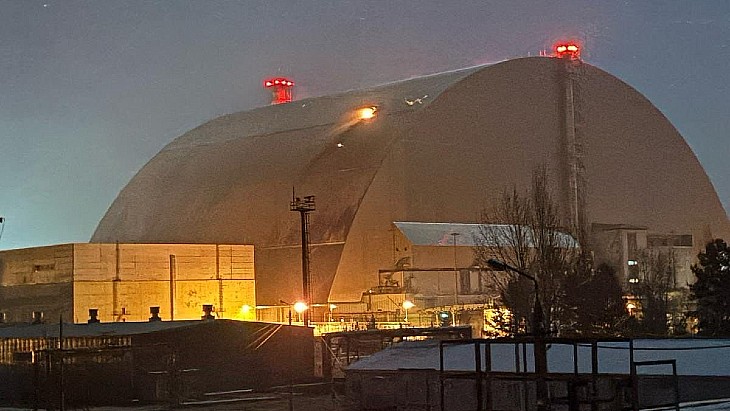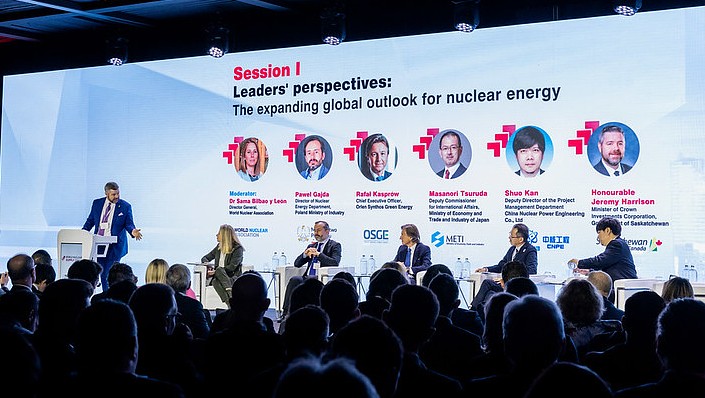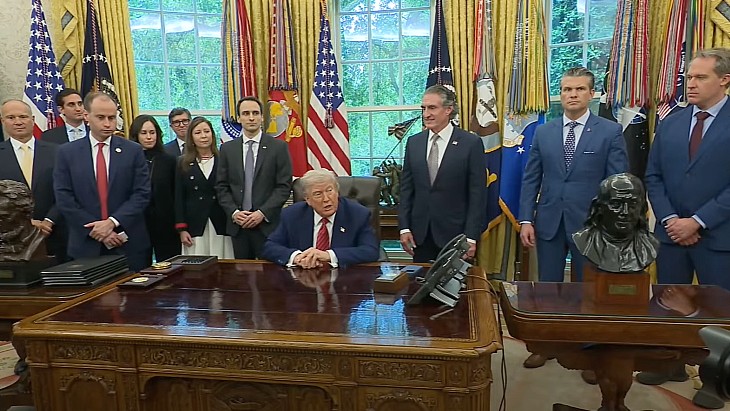Help the public understand radiation, advises cancer expert
.jpg)
Thomas said the real “problem” with radiation was that the public debate fails to separate the peaceful and military uses of nuclear energy.
“If you look back at the historical narrative of nuclear power and nuclear weapons, you’ll find that the two are intertwined. Unfortunately, in the public mind, those cannot be separated, but we do have a general acceptance of medical radiation exposure,” she said.
“Let it not be forgotten that some of the things that we use in medicine come out of nuclear power plants. People think that all that comes out is electricity, but actually some of the better agents being used to image tumours come out of nuclear power plants.
“We also hear people saying, ‘Let’s sit in a nice hot spa with lots of nice radon.’ But don’t they know that radon causes lung cancer? Why do we believe natural radiation is fine and beneficial, but anything that we make is not?”
There is a “very simple relationship”, she said, between dose and response to all toxins, including radiation.
“I don’t separate radiation from chemical toxins,” she said. “The individual dose from radiation in the environment depends on many factors: your body’s composition; what you eat and drink; where you work; all sorts of things, so when we try and explain where dose comes from the public just switch off. And there is a big perception that individual dose from nuclear accidents is much higher than it actually is.”
Misinformation
There is a need to take jargon and politics out of the debate on radiation, she said.
“We have a huge problem with communication about radiation because we use too much jargon and that’s scientists’ fault as well as everybody else’s. It’s a political football; there is far more politics about nuclear power than there is about any other power generation. There is a hell of a lot of misinformation on the Internet and very little understandable science. There’s a constant emphasis for the industry on safety. That just makes everybody feel that what you were doing before was unsafe. So, please, stop talking about safety,” she told delegates.
There is a “knowledge and awareness” of the hazards, but the public shows “heightened awareness” of the hazard of man-made radiation relative to radiation from natural sources.
“We need to adjust the unconscious biases around ‘man-made’ and ‘natural’ radiation. The pharmaceutical industry had to face this; there was always the assumption that if man had made the drug it was much worse than the natural compound, but actually most of the really nasty toxins are natural. I’m much more scared of being bitten by a snake than being exposed to radiation.
“So, we need to start talking about this and making it relevant to people. The association of hazard with risk is down to belief rather than scientific evidence. People believe radiation is dangerous even at low levels because that’s what they keep hearing.”
Accidents
The myth behind public perception of radiation has been made worse by erroneous data about deaths following nuclear power plant accidents at Chernobyl and Fukushima, she said.
Thomas referred to the book Chernobyl: Consequences of the Catastrophe for People and the Environment, which was published by the New York Academy of Sciences in 2010. This book stated that 985,000 deaths had occurred as a result of Chernobyl. A previous (2006) study by Elizabeth Cardis from the International Agency for Research on Cancer in Lyon, France predicted that "by 2065, Chernobyl will have caused 16,000 cases of thyroid cancer and 25,000 cases of other cancers, compared with several hundred million cancer cases from other causes".
The 16,000 figure is “probably correct”, Thomas said, “but actually we’re starting to say it’s about 25% of instances of those cases that may be due to the radiation exposure”.
“And as for 25,000 cases of other cancers, we haven’t seen any, only thyroid cancer. So where does that figure come from? But the interesting thing about this quote is at the bottom. They’ve used the numeric form for 16,000 and 25,000 but they’ve written ‘several hundred million cancer cases’ in words, so your mind sees the numbers and doesn’t equate them to the larger figure. So, even ways of presenting data have an effect on public perception,” she said.
Thomas then referred to the assertions made in a 2016 article for MailOnline, 'Living with the fallout of Chernobyl 30 years later'.
She said: “It takes an awful lot of an academic’s time trying to explain that this isn’t true. And we have Fukushima and what I believe were appalling headlines, and I told the Press that it’s their fault: They turned the Fukushima accident into a disaster.”
Dose and effect
On the point at which a hazard can be seen to have become a risk, Thomas said there is a lack of understanding among the general public between dose and effect, which she thinks has been caused by the linear, no-threshold dose hypothesis that radiation is dangerous at every level, which is not correct.
She referred to a study published by the Washington DC National Research Council in 2005, Health Risks from Exposure to Low Levels of Ionising Radiation.
“If you expose each one of 100 Americans to 100 mSv of radiation, one would be likely to get cancer as a result. Exposure from Fukushima was way below this,” Thomas said. “Those who would get cancer from other causes was 42 and I’d be a damn sight more worried about the 42, especially when that one case could mean we make other mistakes in determining where our energy should come from.”
There is a need therefore to look at comparative health risks and putting them into a context understandable to the public, she said.
There is an increased risk of mortality of 2.8% from living in a megacity versus a small town, she said. From passive smoking the figure is 1.7%. Those figures contrast with 1.0% and 0.4% for exposure to, respectively, 250mSv and 100mSv from Chernobyl.
Risk can be minimised by informing the public of what to do in the event of an accident before an accident occurs, she said. This advice includes taking shelter inside buildings, orderly evacuation for the short term, minimising the consumption of local food rich in iodine (milk, leafy vegetables), and not to panic. The latter will result in many more casualties than the radiation exposure, Thomas said.
Trust
Leadership built on trust and public interaction built on trust are needed, she said. This involves those running a nuclear power plant, those regulating the industry, workers within the plant, and communicators separate to the industry or government all speaking openly about nuclear power. In addition, there are public figures who understand the energy debate and can communicate on the risks and benefits, who include, she said, Bill Gates and Michael Shellenberger.
In its own communication, the nuclear industry should not compete with wind and solar, since “diversity is key to a successful energy policy”, she said. All methods of energy generation have risks and benefits, she said. “I didn’t know about the radiation from wind and solar, but I do now, and I do know about toxic chemicals which scare me more than radiation does,” she added.
There is a need to balance the effects on our ecosystem with the risk of lack of energy, she said, since “everything pollutes to a degree”. The effects of CO2 and particulate pollution may be catastrophic for life on earth and not just humans, she said.
Thomas showed photographs taken of wildlife in the Chernobyl Exclusion Zone - including European bison, elk, grey wolf, red fox, roe deer and the Eurasian lynx, among other species.
“If you take man out of the equation, this is what you get,” she said. “Radiation posed no problem to these animals at all; it was us who was stopping them [thriving in their natural habitat].”
Thomas told delegates: “Start a dialogue now with all levels in society about why nuclear matters. The internet means everyone has a voice and expects their voice to be heard; we need to get our message out there as effectively as the anti-nuclear brigade do. There’s a need to put real evidence-based risks into a context that [people] can relate to. And hearts and minds will only change by dialogue.”

